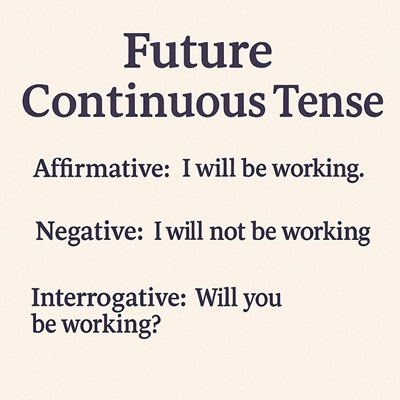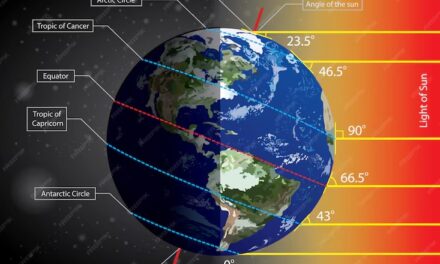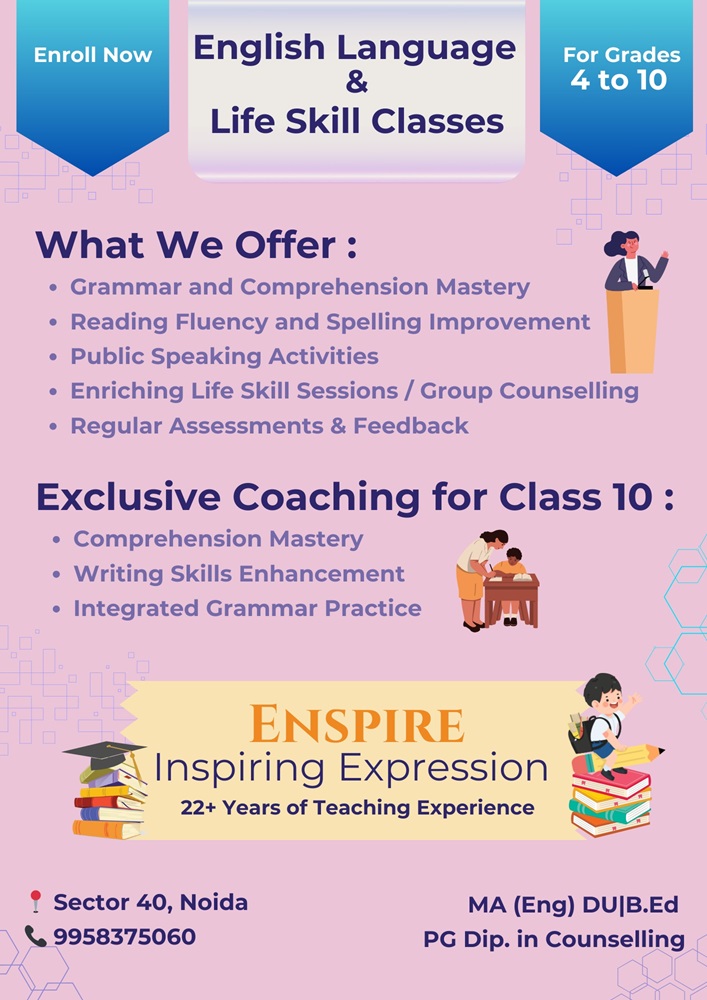What is Future Continuous Tense?
The Future Continuous Tense (also called the Future Progressive Tense) is used to talk about actions that will be in progress at a specific time in the future. It describes actions that will have started but will not have finished at a certain point in the future.
Structure of Future Continuous Tense
The structure of the Future Continuous Tense is:
Subject + will + be + verb-ing
Examples:
- I will be studying at 8 o’clock tomorrow.
- They will be playing cricket next Sunday.
- She will be writing her exam at this time next week.
Negative Form of Future Continuous Tense
To make a negative sentence in the Future Continuous Tense, we add ‘not’ after ‘will’:
Subject + will + not + be + verb-ing
Examples:
- I will not be studying at 8 o’clock tomorrow.
- They will not be playing cricket next Sunday.
- She will not be writing her exam at this time next week.
The contraction ‘won’t’ can also be used instead of ‘will not’:
- I won’t be studying at 8 o’clock tomorrow.
- They won’t be playing cricket next Sunday.
Interrogative Form of Future Continuous Tense
To make a question in the Future Continuous Tense, we place ‘will’ before the subject:
Will + subject + be + verb-ing + ?
Examples:
- Will I be studying at 8 o’clock tomorrow?
- Will they be playing cricket next Sunday?
- Will she be writing her exam at this time next week?
Negative Interrogative Form
To make a negative question, we use ‘will not’ or ‘won’t’ before the subject:
Will + subject + not + be + verb-ing + ? Won’t + subject + be + verb-ing + ?
Examples:
- Will I not be studying at 8 o’clock tomorrow?
- Won’t they be playing cricket next Sunday?
Common Mistakes in Future Continuous Tense
- Forgetting ‘be’:
- Incorrect: She will singing at the concert.
- Correct: She will be singing at the concert.
- Using ‘ing’ form with ‘be’:
- Incorrect: He will being working on the project.
- Correct: He will be working on the project.
- Incorrect word order in questions:
- Incorrect: You will be going to the party?
- Correct: Will you be going to the party?
- Double use of ‘will’:
- Incorrect: I will will be sleeping at 10 PM.
- Correct: I will be sleeping at 10 PM.
- Placing ‘not’ in the wrong position:
- Incorrect: I will be not studying tomorrow.
- Correct: I will not be studying tomorrow.
Exceptions and Special Cases
- Stative Verbs: Some verbs that express states rather than actions are typically not used in continuous tenses. These include:
- Verbs of senses: see, hear, smell, taste, feel
- Verbs of emotion: love, hate, like, dislike, prefer
- Verbs of thinking: believe, know, understand, remember
- Verbs of possession: have, own, belong, possess
Examples:
- Incorrect: I will be knowing the answer tomorrow.
- Correct: I will know the answer tomorrow.
- Incorrect: She will be loving the new book.
- Correct: She will love the new book.
- Future Time Phrases: When using future continuous tense, we often use time phrases that indicate a specific point in the future:
- At this time tomorrow
- While/When something else is happening
- During that period
- By then
When to Use Future Continuous Tense
- Actions in progress at a specific time in the future:
- At 6 PM tomorrow, I will be cooking dinner.
- This time next month, we will be living in Mumbai.
- Planned future actions:
- I will be meeting my friends after school tomorrow.
- She will be visiting her grandparents during the summer holidays.
- Polite questions about someone’s plans:
- Will you be using the computer later?
- Will they be staying for dinner?
- Parallel actions in the future:
- While I will be cooking, my sister will be setting the table.
- She will be reading while her brother will be playing.
Time Expressions Often Used with Future Continuous Tense
- tomorrow at this time
- at 8 o’clock tomorrow
- next week/month/year
- this time next week/month/year
- while
- when
These keywords cover the main topic (future continuous tense), educational context (CBSE, Grade 5), content types (exercises, practice, worksheets), and specific aspects covered in the chapter (negative form, interrogative form, common mistakes). The meta description summarizes the comprehensive nature of the content while highlighting its educational value for different audiences.

















